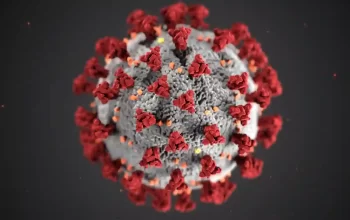Penile erection is a complex psychophysiological process. It can be simply summarized as after various stimuli (physiological and psychological) excite the parasympathetic nerves, the arterioles and vascular sinuses in the corpus cavernosum expand, the inflow of blood increases, and the penis enlarges. to further enlarge the penis erection.

Associated Anatomy
The penis has three corpora cavernous, the two dorsal corpora cavernosa and the other ventral corpus cavernosum called the urethra. There are many spaces and cavities inside the corpus cavernosum, which cooperate with the abundant blood vessels in the penis to participate in erection, among which the corpus cavernosum plays a major role. The corpus cavernosum is covered by an albuginea, which limits the excessive expansion of the corpus cavernosum.
Neural involvement
The nervous system involved in erection includes autonomic nerves (also divided into sympathetic and parasympathetic nerves) and somatic nerves (also divided into sensory nerves and motor nerves). In the spinal cord, the erection-related parasympathetic nerve center is located in the mediolateral nucleus of the S2-S4 segment of the sacral cord, which is mainly related to the occurrence of erection; the sympathetic nerve center is located in the mediolateral gray matter of the T11-L2 segment at the junction of the thoracic and lumbar spinal cords. , which is mainly related to erection regression, that is, weakness; sensory nerves originate from receptors in the skin of the penis, glans, urethra, and corpus cavernosum, which can transmit nerve impulses to the posterior horns of S2 to S4 of the sacral spinal cord; motor nerves originate from the sacrum The anterior horn of the S2-S4 segment of the medulla can innervate the bulbocavernosus and ischiocavernosus muscles.
Occurrence and extinction mechanism
1. The process of transmitting the stimulation to the sacral parasympathetic nerves: Physiological stimulation can be transmitted to the sacral spinal cord S2-S4 through the sensory nerve pathway, and some ascending nerves also transmit pain, temperature, and touch to the cerebral cortex for perception and analysis; psychological stimulation, For example, sight, hearing, taste, smell, etc. related to sex stimulates the cerebral cortex through different pathways, and then the cerebral cortex transmits the impulse to the hypothalamus, and the anterior part of the hypothalamus transmits the impulse to the sacral medulla S2-S4. However, the hypothalamus does not only affect erection by stimulating the sacral cord. The neurons in its nucleus contain peptide neurotransmitters, including oxytocin and vasopressin, which may also be involved in erection. In addition, in some cases, psychogenic erections can also be transmitted from the hypothalamus to sympathetic triggers.
2. The relaxation process of smooth muscle cells in the corpus cavernosum: the hypothalamus or the lower center of the sacral spinal cord sends out an impulse, the nerve impulse is transmitted to the corpus cavernosum, and the parasympathetic nerve endings and vascular endothelial cells are synthesized under the catalysis of nitric oxide synthase (NOS), Release nitric oxide (NO), nitric oxide enters into smooth muscle cells, activates guanylate cyclase (GC), and increases cyclic guanosine monophosphate (cGMP) in smooth muscle cells, the latter Activates proteinase K, acts on calcium ion channels, reduces the intracellular calcium ion concentration, and relaxes smooth muscle cells. Nitric oxide-cyclic guanosine monophosphate (NO-cGMP) is a very important molecular biological pathway for penile erection, but it is not the only pathway. In addition to nitric oxide, substances related to smooth muscle relaxation and penile erection also include acetylcholine, vasoactive intestinal peptide, calcitonin gene-related peptide, and prostaglandin E 2 (PGE), cyclic adenosine monophosphate (cAMP), etc.
3. The process of hyperemia of erection: After the smooth muscle cells of the small arteries and vascular sinuses in the corpus cavernosum relax, the vascular sinuses of the corpus cavernosum expand, the arterial blood flow increases, and the corpus cavernosum is congested and swelled. The swollen corpus cavernosum compresses the venules under the albuginea, closing the venous outflow tract, and the contraction of the pelvic floor muscles (such as the sciatica muscle innervated by the motor nerves) can also compress the corpus cavernosum, making it further swelled, hard and stiff. produce an erection. It can be seen that smooth muscle state, arterial blood flow velocity, and venous blood flow resistance are the three elements of penile erection.
4. Regression process: When the sympathetic nerve is stimulated, phosphodiesterase (PDE) in the smooth muscle of the corpus cavernosum increases, degrades cyclic guanosine monophosphate (GMP), and makes it inactive, so cyclic guanosine monophosphate (GMP) The physiological effects caused by glycosides and their downstream substances are alleviated or even disappeared, the concentration of intracellular calcium ions increases, and smooth muscle cells contract, resulting in decreased arterial blood flow, decreased cavernosal pressure, open veins, and a large amount of blood flow out, and the penis begins to weaken. There are multiple subtypes of phosphodiesterase. The most important one in humans is phosphodiesterase type 5 (PDE5). The drug Viagra (commonly known as Viagra) inhibits erection regression by inhibiting the phosphodiesterase type 5. effect. With the occurrence of erection, phosphodiesterase type 5 is not the only substance related to the resolution. Others include norepinephrine, endothelin, PGF 2 (a biologically active prostaglandin), etc.
The female clitoris and the male glans penis are homologous, that is, they are developed from the same tissue in the embryonic stage, the reproductive tubercle, so their structure is similar to that of the corpus cavernosum, and there is also a corpus cavernous inside. The clitoris is very sensitive and can also get an erection when sexually stimulated. Not only that, similar to the regular erection-weak-erecting process of men at night, women have relative hyperemia (labia, vagina, clitoral hyperemia)-subsidence-congestion process.


